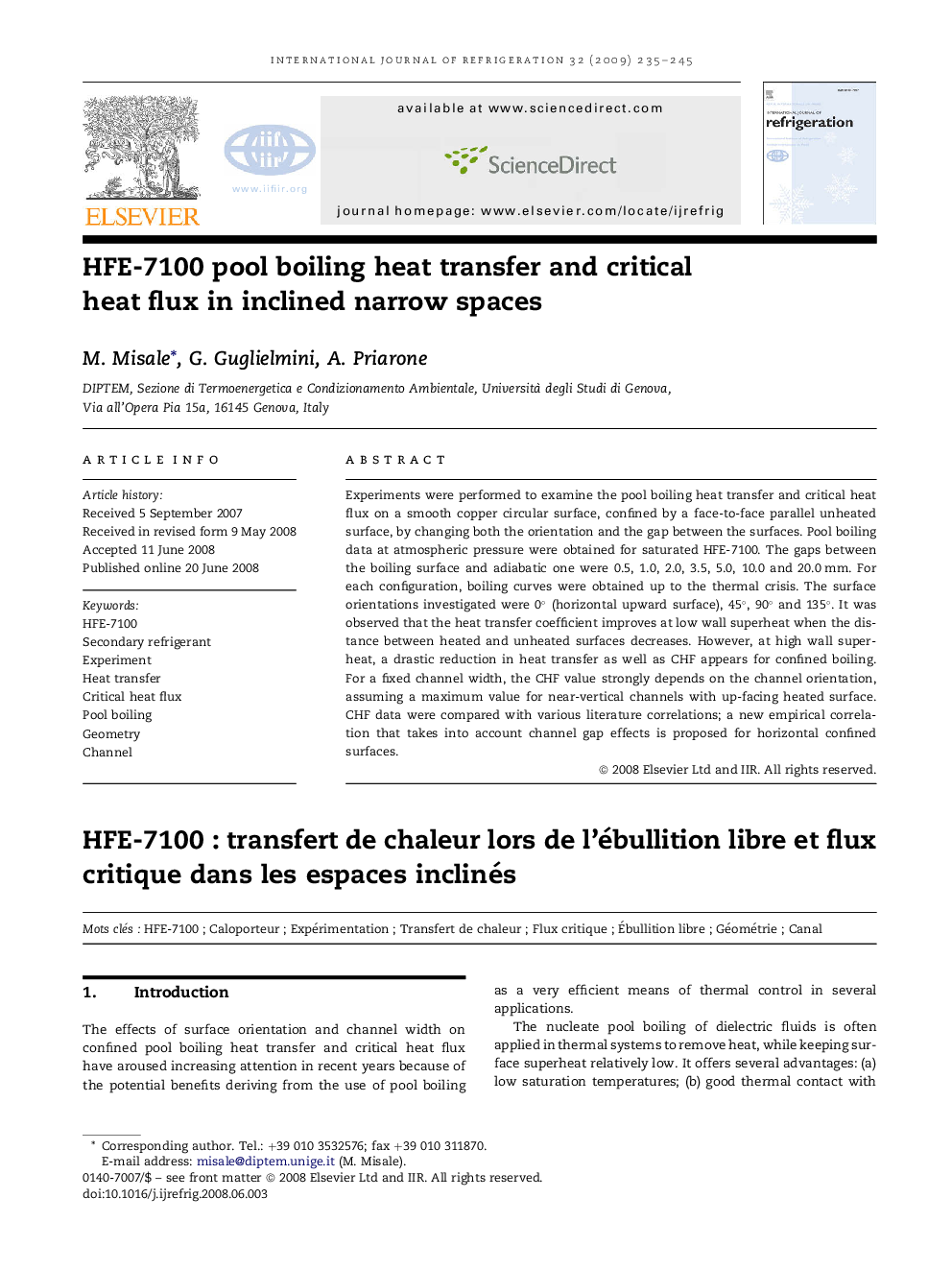| Article ID | Journal | Published Year | Pages | File Type |
|---|---|---|---|---|
| 789895 | International Journal of Refrigeration | 2009 | 11 Pages |
Experiments were performed to examine the pool boiling heat transfer and critical heat flux on a smooth copper circular surface, confined by a face-to-face parallel unheated surface, by changing both the orientation and the gap between the surfaces. Pool boiling data at atmospheric pressure were obtained for saturated HFE-7100. The gaps between the boiling surface and adiabatic one were 0.5, 1.0, 2.0, 3.5, 5.0, 10.0 and 20.0 mm. For each configuration, boiling curves were obtained up to the thermal crisis. The surface orientations investigated were 0° (horizontal upward surface), 45°, 90° and 135°. It was observed that the heat transfer coefficient improves at low wall superheat when the distance between heated and unheated surfaces decreases. However, at high wall superheat, a drastic reduction in heat transfer as well as CHF appears for confined boiling. For a fixed channel width, the CHF value strongly depends on the channel orientation, assuming a maximum value for near-vertical channels with up-facing heated surface. CHF data were compared with various literature correlations; a new empirical correlation that takes into account channel gap effects is proposed for horizontal confined surfaces.
